Capital: Porto-Novo
Area: 114.763 km2
Inhabitants: 12.996.895 inhabitants (2021)
Population density: 113,25 inhabitants per km2.
Languages: Benin is a country with great linguistic diversity. We can find up to 55 languages, although the official language of the country is French. The other languages are considered as national languages. Among these, Fon stands out, which is spoken by approximately 24% of the population. Other national languages are Yoruba, Yom, Bariba or Houeda; others.
Currency: The official currency of the country is the West Africa Franc (CFA). At the exchange, 1 euro is 655 CFA. You can see the current change in the next link. This currency is shared by seven other West African countries such as Senegal, Togo, Ivory Coast, Mali, Niger, Burkina Faso or Guinea Bissau. Therefore, you will be able to use the same currency in different African countries.
Clima: Benin’s climate is tropical, hot and humid. It is a narrow and very long country, so we can divide the country’s climate into two areas: the north and the south of the country. In the north, the climate is tropical with a single rainy season, which runs from May to September, with July and August becoming the wettest months. In the south, the climate is subequatorial with two dry seasons and two rainy seasons. The longest rainy season occurs between April and July (June is the wettest month), while there is a short dry season during August and September, followed by a short rainy season between September and October. Finally, from November to March there is the longest dry season. We went to Benin in May 2022 and despite being there during the long rainy season, we were able to travel peacefully through the country as the rain made an appearance in the form of short and intense daily showers. Consider also that Benin is a very hot country with temperatures that fluctuate throughout the year between 23º and 35º.
Internet / SIM card: The main SIM card we used for our phone was from the MTN company. We bought a 10GB pack for 12,000 CFA at the MTN headquarters in the Cocotiers neighborhood (located next to the Haie Vive accommodation). As for the Internet, we had good coverage except in the area of Pays Taneka and Pays Somba where the connection was more limited. Always carry cash as card payment was not yet very popular when we visited the country in May 2022. There are ATMs to withdraw money such as Societe Generale or Banque Atlantique banks.
Visa: To access Benin, with a Spanish passport, you will need to process a visa that you can do online at this link. We recommend that you apply for the visa at least two weeks before traveling to the country to avoid any problem. Being online, you will have to register your email there and enter your passport details and the reason for travel and the type of visa you want (30 or 90 days). It usually takes between 1 and 4 days to process the visa that you will have to print in order to show at the airport and that they can stamp your passport and allow you to enter the country. The price for a 30-day tourist visa is 50 euros, while if you want to stay more days and take the 90-day tourist visa, you will have to pay 100 euros. Think that you will also have to pay €1.55 per visa as a visa management fee.
Budget: In total, we spent 22 days in Benin and spent a total of 610.24 euros per person. As activities, it should be noted that we did a 3-day tour with Euloge of Loana Travel in order to meet the Holi and Fulani groups, visit Abomey and see a Geledé dance and an initiation dance in the voodoo He gave us a special price because he was really looking forward to know our experience on the African continent during our sabbatical year through Africa. Then, we also visited Cotonou, Porto Novo and Ganvié on our own; and with local guides Ouidah, Grand Popo, Pays Taneka and Pays Somba. Below is a breakdown of all the expenses in Benin:
WHAT TO SEE IN BENIN?
1.- COTONOU AND DANTOKPA MARKET
Cotonou is the most populated city in the country. Located next to the sea, its commercial port is one of the most important in the Gulf of Guinea, which makes it the most important city economically speaking. There, you can find, among others, the Dantokpa market, one of the largest markets in West Africa, located next to Lake Nokoué and where you can find a wide variety of products such as handicrafts, food, clothes or household appliances. In addition, you can walk along the beaches of Fidjrosse and see the atmosphere that breathes there; move with Zem, the motorcycles that are the country’s public transport par excellence; and get to know the artistic world that is hidden behind this African city.
Ganvié, which means freedom in the water, is one of the most iconic towns in Benin. It is a floating town built on the waters of Lake Nokoué, a short distance from Cotonou, where the Tofinu people took refuge during the 17th century in order not to be captured by the great kingdom of Dahomey. Today, Ganvié is a city of about 40,000 people who make their living on the water. There, you can see its floating houses, sail a canoe through its streets, watch how people move from the “window on the world” and enjoy the morning market that is held every day in its waters and where the women, on their wooden canoes, they sell food for all the people who leave the city.
3. OUIDAH, THE HISTORY OF SLAVES AND THE DOOR OF NO RETURN
Ouidah is one of the historic cities of Benin. With a relaxed and calm atmosphere, there we find a great cultural history that explores everything related to voodoo. In fact, during the month of January, the International Voodoo Festival is held there, one of the most important in the country. However, this city is known for a tragic history that happened over hundreds of years. Ouidah was the main point of departure for slaves from the African continent during the heyday of shipments of cheap labor to the New World at the hands of the colonizers. Today, you can witness the different places where these slaves went, who left the continent through the door of no return, leaving behind their origin and their dignity.
4. PAYS TANEKA, A VILLAGE HIDDEN AMONG THE MOUNTAINS
The Taneka region is a beautiful region, located at an altitude of about 654 meters, which is located in the center of the country, near the city of Djougou. It is a rural area located on top of a mountain where a group of people took refuge in order not to be captured by their enemies. Today, in this place we can find a very authentic Africa that refuses to change. With mud houses located under ancient trees that symbolize the spirit of their ancestors, this tribal group has managed to preserve the authenticity of their culture, with a governance system of animist kings, dignitaries and priests. Despite the difficulties of living in an area without access to electricity and water, the hospitality we found in Pays Taneka is one of the best experiences we took away from our trip to Benin.
5. GRAND POPO AND LA BOUCHE DU ROI
Grand Popo is a region that is on the sea front, right next to Togo. Although it was historically an important site during the slave trade, today it is the country’s quintessential beach destination. In addition, in Grand Popo we find the Mono river and its mouth known as “La Bouche du Roi” where you can enjoy a spectacular landscape, with hundreds of palm trees that are next to the river, the different mangroves and islands inhabited by small villages, a very photogenic fishing technique used by local fishermen and a smiling, humble and simple people that will surely make this destination one of the most beautiful in Benin.
In the center of Benin, around the cities of Cové and Dassa we find examples of minority ethnic groups that are part of this great multiculturalism of Benin. Visit the Holi ethnic group, which stands out for its body scarifications; see a Geledé dance, declared Intangible Heritage by UNESCO, and performed by the Yoruba tribe to give thanks for the harvest and the absence of disease; or meeting the nomadic Fulani people with their igloo-shaped houses are some of the things you can discover in this region. We were lucky to have a great guide who took us to these remote places to discover the diversity of groups we find in Benin.
7. PORTO NOVO, AGUEGUE AND ADJARRA MARKET
Porto Novo is the political capital of Benin. With a peaceful atmosphere, in this city we can find a unique fusion of Brazilian and African culture, with its Afro-Brazilian mosque; as well as different museums that explain the cultural heritage of this country. Nearby, we find Aguegue, a town that lives next to Lake Nokoué and the Adjarra market, a vibrant open-air shopping center that stands out for its colors and stalls where you can find traditional tam-tams , handmade baskets to live animals and food products. Market and color are two of the words that could define the country of Benin.
8. PAYS BETAMMARIBÈ, ALSO KNOWN AS PAYS SOMBA, A GROUP NOTABLE FOR ITS FORTIFICATIONS: THE TATA
Pays Betammaribè, located in the northwest of Benin and also known as Pays Somba, is a region that stands out for its rural landscape and for its traditional houses known as Tata Somba. This ethnic group lives in different border towns of Benin and Togo, and stands out for its two-stage earthen fortifications that served to protect themselves from potential invaders and that blend harmoniously into the agricultural landscape of the region. In addition to its impressive architecture, Pays Betammaribè has a rich and diverse culture with traditions that show in its festive celebrations.
9. ABOMEY, SEAT OF ONE OF THE MOST IMPORTANT KINGDOMS IN AFRICA
Abomey, former capital of the Kingdom of Dahomey, is a city with a lot of history. Known for its royal palaces, declared World Heritage by UNESCO, the city stands out for its past where it was one of the most feared and important kingdoms in West Africa, with the presence of an army of women known as the Amazons of Dahomey. In this city, you can find many experiences that revolve around voodoo, a religious and spiritual practice deeply rooted in the region. For example, you can visit the Bohicon fetish market known as the soul market or, if you’re lucky, attend a voodoo ceremony like the one we saw, which was an initiation dance for new voodoo followers to worship the God Zakpata
10. PENDJARI NATIONAL PARK
Pendjari National Park is one of the few places in West Africa where you can see wild animals. You can find lions, elephants, crocodiles, hippos, buffaloes, antelopes…that coexist in a very beautiful environment of rivers and mountains. Unfortunately, this park has been closed for some time for security reasons due to the conflict with different jihadist groups in the north of the country that have caused several deaths and kidnappings of tourists. In May 2022 the park was closed. If you want to go there, you need to check how the situation is and whether it can be accessed with the relevant security measures.







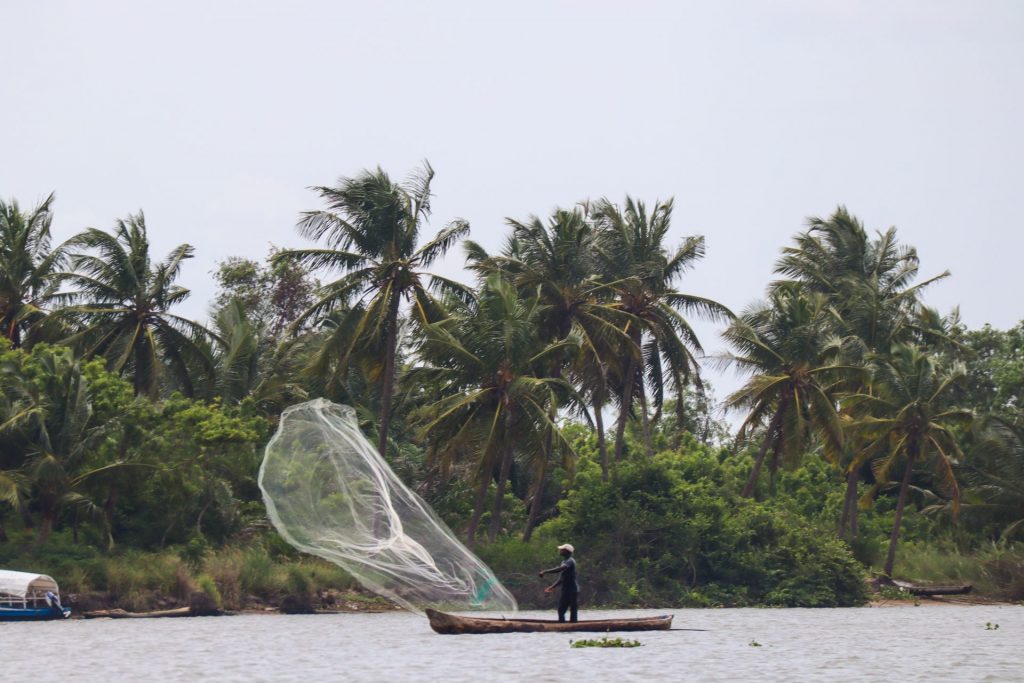






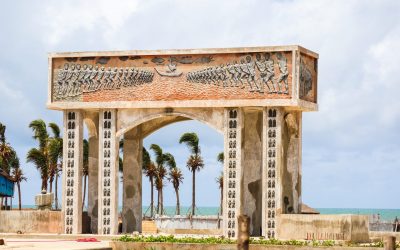
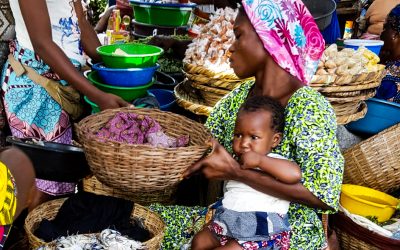
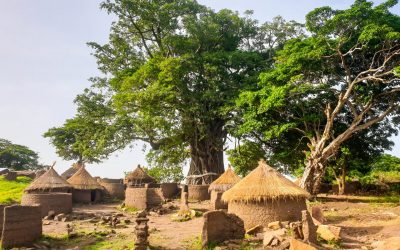
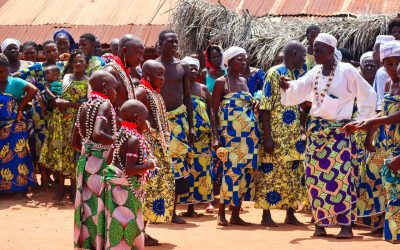
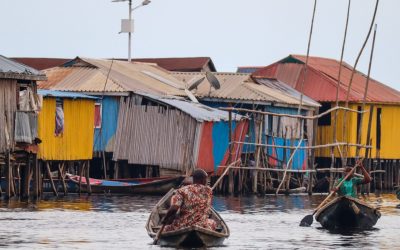
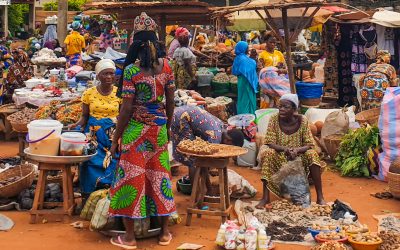
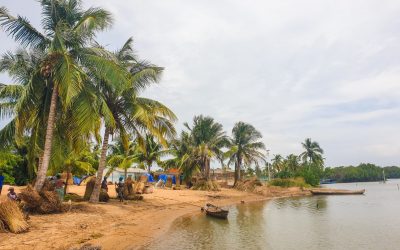
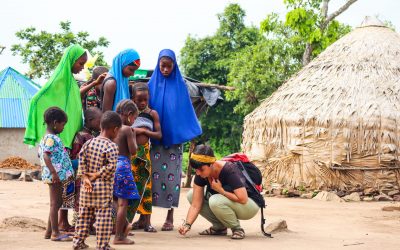
0 Comments